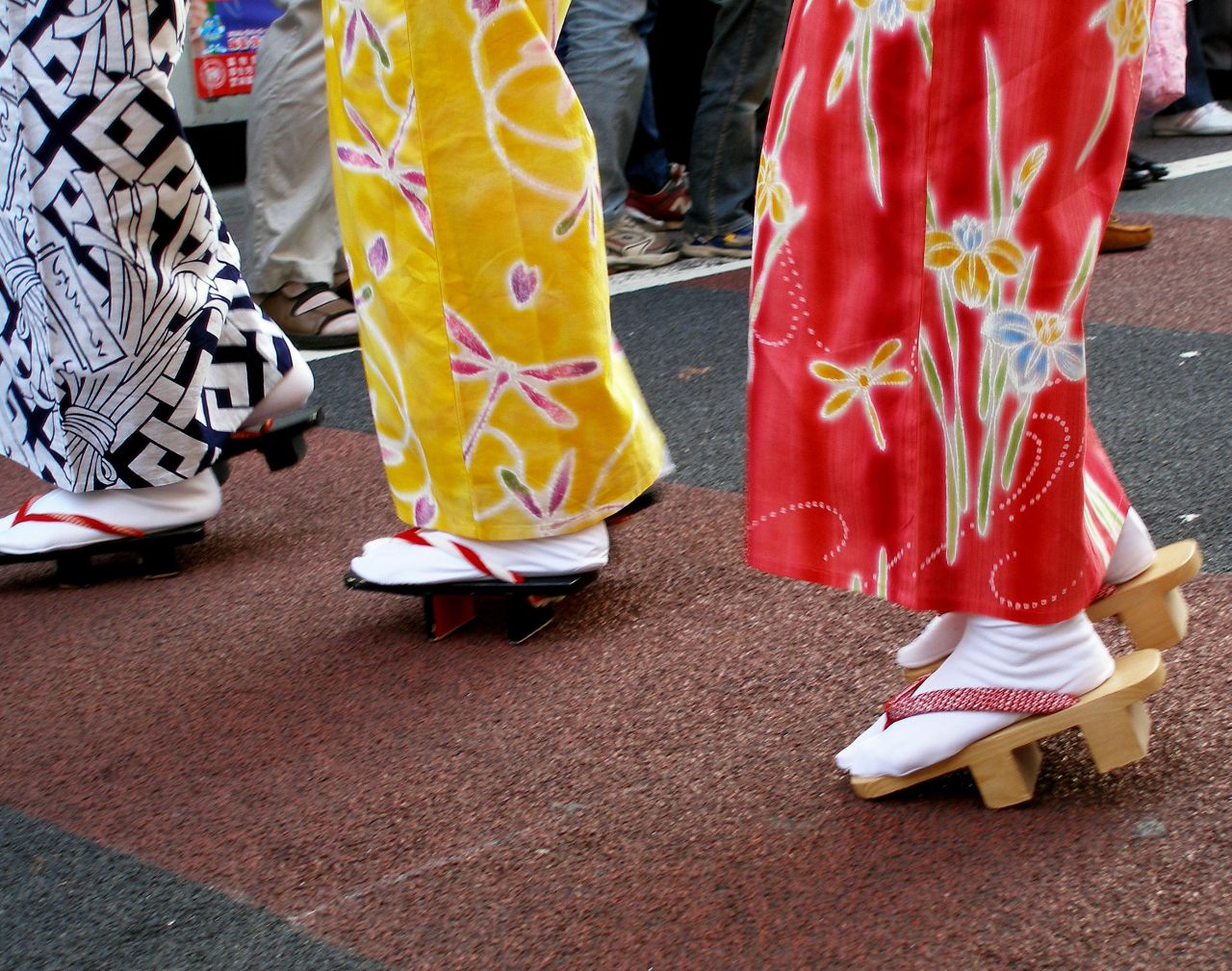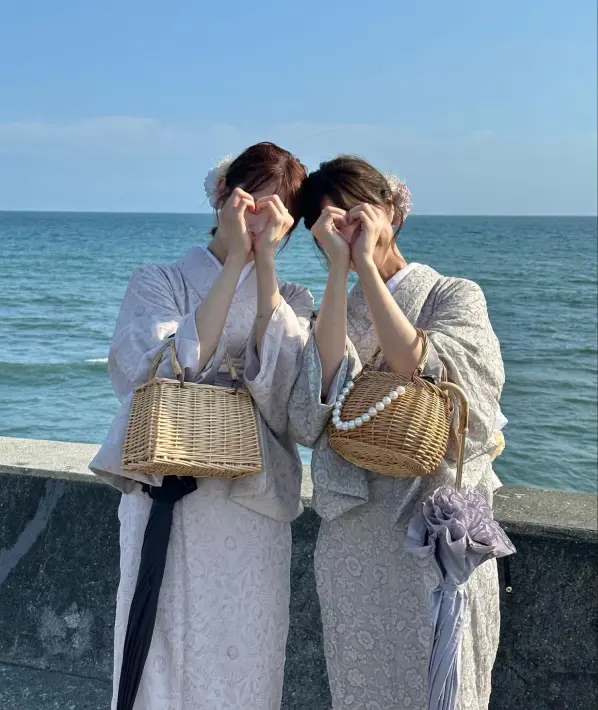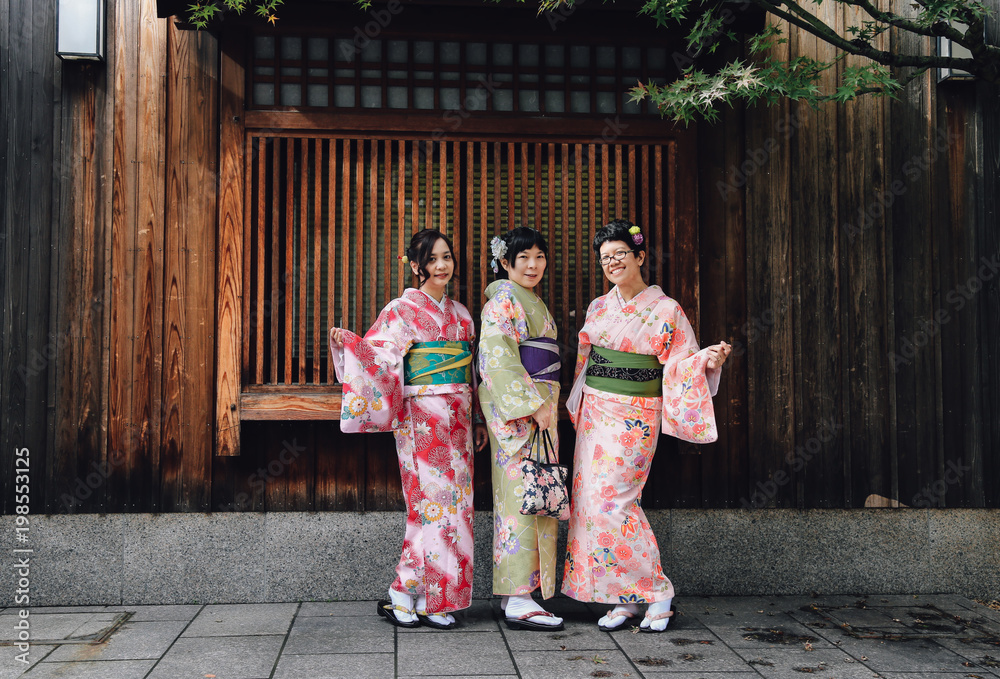Ultimate Guide: 25+ Creative Kimono Group Photo Ideas & Professional Photography Tips for Unforgettable Memories

Figure 1: Friends enjoying a memorable kimono photoshoot experience in Kyoto’s traditional Gion district
Are you planning a special kimono photoshoot with friends in Japan? Whether you’re visiting Kyoto’s historic districts or celebrating a traditional ceremony, capturing stunning group photos in kimono requires specific techniques, poses, and locations to truly showcase the beauty of these magnificent garments.
In this comprehensive guide, we’ll explore professional photography techniques, creative pose ideas, and insider tips to help you create breathtaking kimono group photos that preserve your memories forever. From traditional arrangements to modern interpretations, discover everything you need to know about kimono photography.
- Essential Kimono Photography Techniques
- Creative Face Covering Ideas
- Traditional Footwear Styling
- Mastering Full Body Shots
- Intimate Close-Up Photography
- Highlighting the Obi Sash
- Stunning Back View Compositions
- Best Kimono Photography Locations
- Professional Photography Services
- Trendy Modern Poses
- Gender-Specific Pose Guidelines
- Advanced Photography Tips and Techniques
- Planning Your Kimono Photo Session
- Conclusion: Creating Timeless Kimono Memories
- Frequently Asked Questions
- What are the essential components of a perfect group photo in kimono?
- How can I ensure individuality while maintaining group unity in kimono photos?
- What should I consider when choosing a location for kimono group photos?
- Are certain colors of kimonos better suited for group photos?
- Do specific seasons affect kimono photography opportunities?
- How long should I plan for a professional kimono photo session?
- What’s the best group size for kimono photography?
Essential Kimono Photography Techniques
Understanding Traditional Kimono Aesthetics
Kimono photography goes beyond simple portrait techniques. These elegant garments embody centuries of Japanese cultural heritage, featuring intricate patterns, flowing silhouettes, and symbolic colors that deserve careful photographic consideration.

Figure 2: Professional photography setup demonstrating optimal lighting conditions for kimono photoshoots
Key elements to emphasize:
- Fabric texture and weave patterns
- Seasonal motifs and symbolic designs
- Color harmony and contrast
- Traditional silhouette and draping
- Cultural authenticity and respect
Professional Lighting for Kimono Photography
Proper lighting is crucial for capturing the rich textures and vibrant colors of kimono fabrics. The interplay between light and silk creates depth that brings your photos to life.
Optimal lighting conditions:
- Golden Hour Magic: Shoot during the first hour after sunrise or the last hour before sunset for warm, flattering light
- Soft Diffused Light: Overcast days provide even illumination that prevents harsh shadows
- Backlighting Effects: Position subjects between camera and light source for ethereal rim lighting
- Reflector Usage: Use white or gold reflectors to fill shadows and brighten faces
- Indoor Studio Setup: Employ softboxes and umbrella lights for controlled environments
Advanced Composition Techniques for Group Photography
Creating visually compelling group compositions requires understanding of design principles and spatial relationships.
Professional composition strategies:
- Rule of Thirds: Position key subjects along intersection points for dynamic balance
- Leading Lines: Use architectural elements, pathways, or fabric folds to guide viewer’s eye
- Layered Depth: Arrange subjects at varying distances to create three-dimensional feel
- Symmetrical Balance: Create formal, traditional arrangements for ceremonial photos
- Asymmetrical Dynamics: Use uneven groupings for modern, casual interpretations
Post-Processing Enhancement Techniques
Digital editing can significantly enhance your kimono photographs while maintaining authenticity.
Essential editing adjustments:
- Color grading to enhance fabric hues
- Selective sharpening for pattern details
- Gentle skin retouching while preserving natural texture
- Background enhancement or replacement
- Contrast optimization for fabric definition
Creative Face Covering Ideas
Traditional Fan Photography
Incorporating traditional Japanese fans (sensu or uchiwa) into group photos adds elegance and mystery while honoring cultural traditions.

Figure 3: Traditional fan photography technique showcasing elegant face covering with decorative Japanese fan
Creative fan pose variations:
- Partial Concealment: Cover lower half of face to emphasize eyes
- Coordinated Coverage: Multiple subjects using fans in synchronized patterns
- Peek-a-Boo Effect: Gradually reveal faces in sequence across the group
- Decorative Framing: Use fans to frame faces rather than cover them
- Color Coordination: Match fan colors to kimono accents or obi details
Modern Mask Integration
Contemporary face coverings can add artistic flair while respecting current social considerations.
Stylish masking approaches:
- Elegant silk masks that complement kimono patterns
- Traditional-inspired designs with modern materials
- Coordinated colors across the entire group
- Artistic masks that enhance rather than hide features
- Seasonal themes matching kimono motifs
Traditional Footwear Styling
Understanding Japanese Footwear Options
Proper footwear selection significantly impacts the overall aesthetic and authenticity of kimono photography.

Figure 4: Traditional Japanese footwear options including geta wooden clogs and zori sandals for authentic kimono styling
Traditional footwear types:
- Zori Sandals: Formal option with raised heel, perfect for special occasions
- Geta Wooden Clogs: Casual choice with distinctive elevated design
- Tabi Socks: Split-toe socks that enhance traditional appearance
- Barefoot Options: For informal, artistic interpretations
- Modern Adaptations: Contemporary shoes that complement kimono styling
Footwear Photography Techniques
Composition strategies for footwear focus:
- Low-angle shots that emphasize traditional wooden soles
- Detail shots showcasing intricate strap designs
- Full-body compositions that include complete outfit coordination
- Walking sequences that capture natural movement
- Sitting positions that highlight foot positioning
Mastering Full Body Shots
Showcasing Complete Kimono Elegance
Full-body photography allows viewers to appreciate the kimono’s entire silhouette, from flowing sleeves to hemline details.

Figure 5: Professional full-body kimono group photography demonstrating proper composition and subject arrangement
Technical considerations for full-body shots:
- Camera Height: Position camera at chest level for flattering proportions
- Distance Management: Maintain 8-10 feet distance to avoid distortion
- Angle Variety: Capture front, three-quarter, and profile views
- Background Selection: Choose settings that complement rather than compete
- Group Arrangements: Stagger heights and positions for visual interest
Dynamic Group Formations
Effective full-body group arrangements:
- Linear Formations: Subjects arranged in straight or curved lines
- Triangular Compositions: Three-person groupings with height variation
- Circular Arrangements: Groups facing inward or outward from center
- Layered Depths: Front and back row positioning for larger groups
- Natural Clustering: Organic groupings that feel conversational and relaxed
Intimate Close-Up Photography
Capturing Intricate Details
Close-up photography reveals the masterful craftsmanship and artistic details that make each kimono unique.
Figure 6: Detailed close-up photography showcasing intricate kimono fabric patterns and traditional craftsmanship
Detail-focused techniques:
- Fabric Texture: Macro shots revealing weave patterns and material quality
- Pattern Elements: Focus on specific motifs like cherry blossoms or geometric designs
- Hardware Details: Ornate buttons, clasps, and decorative elements
- Accessory Integration: Hair ornaments, jewelry, and traditional accessories
- Emotional Expressions: Intimate portraits that capture personality and mood
Advanced Depth of Field Techniques
Professional bokeh and focus strategies:
- Shallow depth of field to isolate subjects from background
- Focus stacking for sharp detail throughout the composition
- Selective focus to highlight specific design elements
- Artistic blur effects that enhance rather than distract
- Foreground/background relationships that create visual depth
Highlighting the Obi Sash
Understanding Obi Significance
The obi sash represents one of the most important and artistic elements of kimono attire, often featuring elaborate knots and designs that deserve special photographic attention.
Figure 7: Back view highlighting the elaborate obi sash with traditional tying patterns and decorative elements
Obi photography techniques:
- Back-focused compositions that showcase elaborate bow designs
- Side-angle shots revealing the obi’s width and decorative patterns
- Detail close-ups of knot construction and fabric artistry
- Group coordination where obi colors create visual harmony
- Symbolic arrangements that honor the obi’s cultural significance
Creative Obi-Centered Poses
Innovative composition ideas:
- Subjects arranged to display various obi tying styles
- Hands positioned to frame or interact with obi designs
- Back-to-back poses that compare different obi patterns
- Circular formations where obi colors create rainbow effects
- Movement shots that show obi fabric in motion
Stunning Back View Compositions
Showcasing Kimono Back Design
The back view of a kimono often reveals the most elaborate designs and sophisticated tailoring techniques.
Back-view photography strategies:
- Symmetrical arrangements for formal, balanced compositions
- Walking sequences that show natural movement and fabric flow
- Architectural backgrounds that complement kimono lines
- Multiple subject coordination for complex pattern displays
- Environmental integration using natural or cultural settings
Technical Excellence for Back Shots
Professional techniques for back photography:
- Proper lens selection to avoid distortion
- Lighting that emphasizes fabric texture and pattern
- Composition rules that create visual impact
- Color coordination between subjects and environment
- Post-processing techniques that enhance details
Best Kimono Photography Locations
Traditional Cultural Sites
Japan offers countless historically significant locations that provide authentic backdrops for kimono photography.

Figure 8: Traditional Kyoto temple location providing authentic cultural backdrop for kimono photography
Iconic traditional locations:
- Kyoto’s Gion District: Historic geisha quarters with traditional architecture
- Fushimi Inari Shrine: Thousands of red torii gates creating dramatic backdrops
- Arashiyama Bamboo Grove: Natural tunnel effects with filtered light
- Kiyomizu-dera Temple: Elevated views overlooking Kyoto cityscape
- Golden Pavilion (Kinkaku-ji): Reflective water surfaces and traditional gardens
Natural Settings for Seasonal Beauty
Seasonal location recommendations:
- Spring: Cherry blossom parks and temple gardens
- Summer: Traditional gardens with flowing water features
- Autumn: Maple tree groves with vibrant fall colors
- Winter: Snow-covered temple grounds and traditional buildings
Urban Contemporary Locations
Modern settings for creative contrast:
- Traditional neighborhoods with preserved architecture
- Modern museums with minimalist backgrounds
- Rooftop terraces overlooking city skylines
- Art galleries with neutral, controlled environments
- Contemporary gardens blending traditional and modern elements
Professional Photography Services
Why Choose Professional Kimono Photography
While smartphone cameras have improved dramatically, professional kimono photography requires specialized knowledge of lighting, composition, and cultural sensitivity that only experienced photographers can provide.
Benefits of professional services:
- Expert knowledge of traditional poses and cultural etiquette
- Professional-grade equipment for superior image quality
- Understanding of kimono styling and proper garment arrangement
- Access to exclusive locations and optimal shooting times
- Post-processing expertise that enhances while maintaining authenticity
AllPhoto Kyoto: Your Premier Kimono Photography Experience
For visitors to Kyoto seeking the ultimate kimono photography experience, AllPhoto Kyoto offers comprehensive professional services that combine cultural expertise with cutting-edge photography techniques.
AllPhoto Kyoto specializes in:
- Traditional and contemporary kimono photography sessions
- Group bookings for friends, families, and special events
- Location scouting and permits for exclusive venues
- Professional kimono styling and coordination services
- Same-day editing and digital delivery options
- Cultural education and proper etiquette guidance
Service highlights:
- Bilingual photographers fluent in Japanese and English
- Extensive portfolio of kimono photography across all seasons
- Flexible packages accommodating various group sizes and budgets
- Professional hair and makeup services available
- High-resolution digital galleries with unlimited downloads
- Print services for albums, wall art, and gift items
Trendy Modern Poses
Contemporary Kimono Photography Trends
Modern kimono photography blends traditional elements with contemporary aesthetics, creating fresh interpretations that appeal to today’s social media-savvy audiences.
Figure 9: Contemporary kimono group photography showcasing modern casual poses while maintaining traditional elegance
Popular modern pose categories:
- Candid Lifestyle: Natural, unposed moments that feel authentic
- Fashion Editorial: High-fashion inspired poses with dramatic angles
- Social Media Optimized: Instagram-worthy compositions with strong visual impact
- Artistic Interpretations: Creative poses that push traditional boundaries
- Documentary Style: Storytelling approaches that capture genuine emotions
Group Dynamic Poses
Innovative group arrangements:
- Action Sequences: Walking, laughing, or interacting naturally
- Geometric Formations: Mathematical precision in subject positioning
- Layered Storytelling: Each subject representing different aspects of friendship
- Seasonal Interactions: Poses that incorporate environmental elements
- Cultural Fusion: Blending traditional Japanese elements with international influences
Gender-Specific Pose Guidelines
Kimono Poses for Men
Male kimono photography requires understanding of traditional masculine aesthetics while allowing for personal expression.

Figure 10: Male kimono photography demonstrating traditional masculine poses and formal traditional styling
Traditional masculine poses:
- Formal Standing: Straight posture with hands at sides or behind back
- Contemplative Sitting: Seated positions emphasizing dignity and composure
- Walking Strides: Natural movement showing confidence and grace
- Fan Integration: Using traditional fans as props for elegant concealment
- Group Leadership: Positioning that shows guidance and protection
Modern masculine interpretations:
- Casual, relaxed poses that maintain dignity
- Interaction with environment and props
- Emotional expressions that show personality
- Contemporary accessories integrated thoughtfully
- Dynamic movement that feels natural and confident
Kimono Poses for Women
Female kimono photography celebrates feminine grace while honoring traditional aesthetics.
Classical feminine poses:
- Graceful Standing: Slight forward lean with hands positioned elegantly
- Seated Elegance: Formal sitting with proper kimono arrangement
- Hand Positioning: Traditional gestures that enhance overall composition
- Fan Work: Artistic use of fans for both concealment and decoration
- Fabric Interaction: Gentle manipulation of sleeves and hem for dynamic flow
Contemporary feminine styles:
- Natural, joyful expressions that show personality
- Interactive poses with friends and environment
- Modern accessories integrated respectfully
- Confident body language that feels empowering
- Creative interpretations that maintain cultural respect
Advanced Photography Tips and Techniques
Weather Considerations
Seasonal photography strategies:
- Spring: Capitalize on cherry blossom season but prepare for crowds
- Summer: Early morning shoots to avoid heat and harsh lighting
- Autumn: Utilize colorful foliage but watch for wind affecting fabric
- Winter: Shorter daylight requires efficient shooting schedules
Equipment Recommendations
Professional gear suggestions:
- Camera Bodies: Full-frame sensors for superior low-light performance
- Lenses: 85mm and 135mm for flattering portraits, 24-70mm for versatility
- Lighting: Portable LED panels and reflectors for fill light
- Tripods: Sturdy support for group shots and longer exposures
- Accessories: Extra batteries, memory cards, and weather protection
Cultural Sensitivity and Respect
Important considerations:
- Research proper kimono wearing etiquette
- Understand color symbolism and seasonal appropriateness
- Respect photography restrictions at religious sites
- Be mindful of local customs and traditions
- Avoid poses or interpretations that could be considered disrespectful
Planning Your Kimono Photo Session
Pre-Shoot Preparation
Essential planning steps:
- Kimono Selection: Choose colors and patterns that coordinate well
- Location Research: Scout venues and obtain necessary permits
- Weather Backup: Have indoor alternatives for outdoor shoots
- Timeline Planning: Allow sufficient time for dressing and travel
- Group Coordination: Ensure all participants understand expectations
Day-of-Shoot Organization
Execution best practices:
- Arrive early for kimono fitting and styling
- Bring comfortable shoes for location changes
- Pack touch-up makeup and hair accessories
- Stay hydrated and take breaks as needed
- Communicate openly with your photographer about preferences
Conclusion: Creating Timeless Kimono Memories
Kimono group photography represents a unique opportunity to celebrate friendship while honoring Japanese cultural traditions. Whether you choose traditional poses in historic locations or contemporary interpretations in modern settings, the key lies in understanding the garments’ significance and approaching the experience with respect and creativity.
The investment in professional kimono photography pays dividends for years to come, providing you with stunning images that capture not just your appearance, but the joy, friendship, and cultural appreciation that defined your Japanese experience.
Remember that the best kimono photographs combine technical excellence with genuine emotion. While proper lighting, composition, and posing certainly matter, the most memorable images are those that capture authentic moments of joy, laughter, and connection between friends.
For the ultimate kimono photography experience in Kyoto, consider booking with AllPhoto Kyoto, where professional expertise meets cultural authenticity to create images you’ll treasure forever.
Frequently Asked Questions
What are the essential components of a perfect group photo in kimono?
The most important elements include proper lighting that highlights fabric details, pose symmetry that creates visual balance, careful attention to kimono arrangement and styling, appropriate background selection, and emphasis on the kimono’s unique design elements. Professional photographers also consider color coordination, seasonal appropriateness, and cultural authenticity.
How can I ensure individuality while maintaining group unity in kimono photos?
Use varying poses and heights to create visual interest while maintaining overall harmony. Each person can express their personality through facial expressions, hand positioning, and subtle pose variations while keeping color schemes and styling coordinated. The key is balancing personal expression with group cohesion.
What should I consider when choosing a location for kimono group photos?
Select locations with cultural relevance, aesthetic appeal, or striking contrast that complements your kimono colors and style. Consider practical factors like accessibility, photography permissions, crowd levels, and lighting conditions. Traditional temples, gardens, and historic districts often provide the most authentic backdrops.
Are certain colors of kimonos better suited for group photos?
Coordinated or complementary colors enhance group harmony and visual appeal. Consider seasonal appropriateness—pastels for spring, deeper tones for autumn, and rich colors for winter. Avoid clashing patterns and ensure sufficient contrast between subjects and background for clear definition.
Do specific seasons affect kimono photography opportunities?
Each season offers unique advantages: spring provides cherry blossom backdrops, summer offers lush greenery, autumn brings vibrant foliage, and winter creates serene, minimalist scenes. Season also influences appropriate kimono colors, patterns, and styling choices, making timing an important consideration for authentic photography.
How long should I plan for a professional kimono photo session?
A comprehensive group session typically requires 3-4 hours, including kimono fitting (30-45 minutes), travel between locations (30-60 minutes), and actual photography time (2-3 hours). Allow extra time for makeup touch-ups, outfit adjustments, and breaks, especially for larger groups.
What’s the best group size for kimono photography?
Groups of 3-8 people work best for most locations and compositions. Smaller groups allow for more intimate, detailed shots, while larger groups create impressive visual impact but require more coordination and planning. Consider your chosen venue’s space constraints and your photographer’s recommendations.
Ready to capture stunning kimono memories with your friends? Book your professional photography session with AllPhoto Kyoto and experience the perfect blend of traditional elegance and contemporary artistry in Japan’s most beautiful settings.



コメント